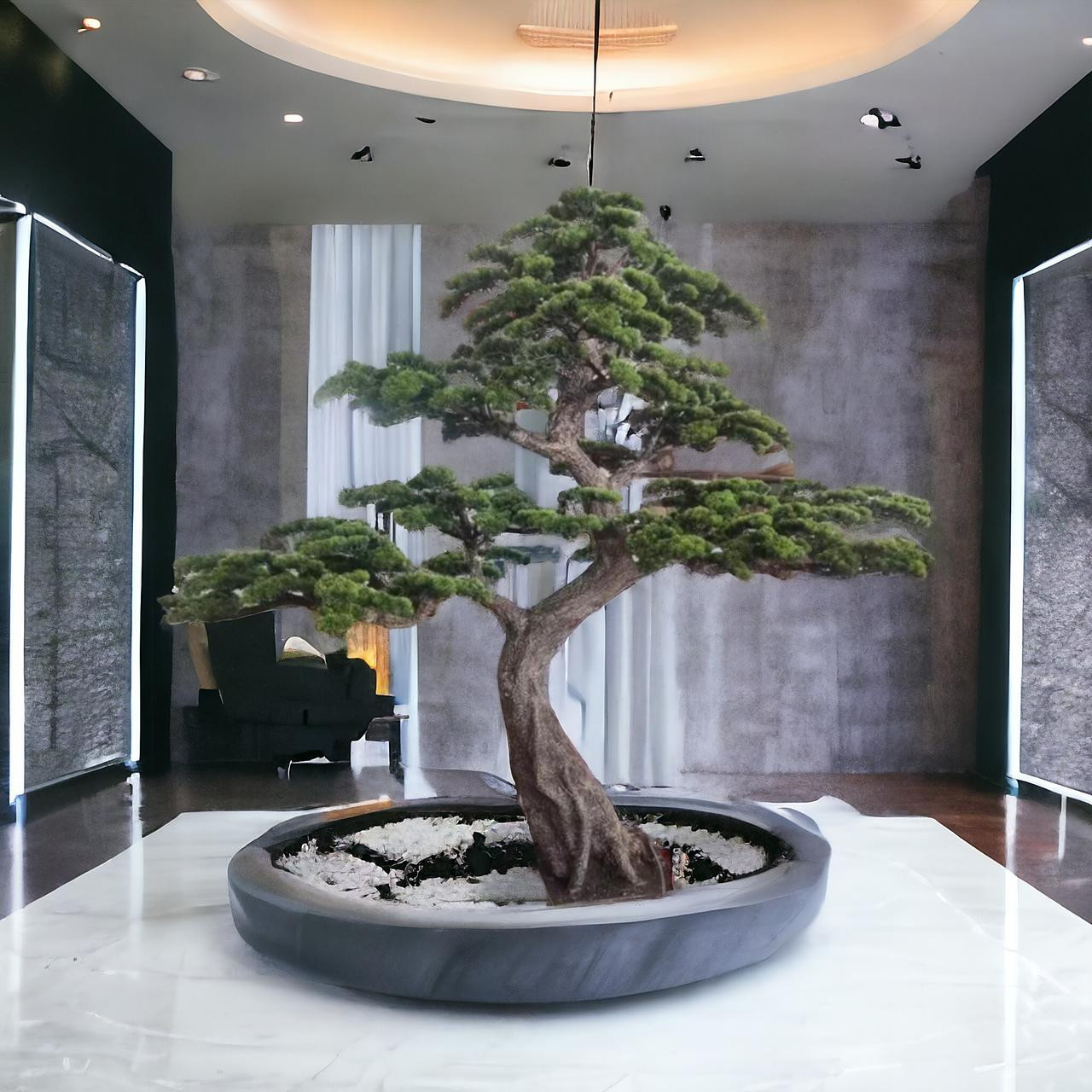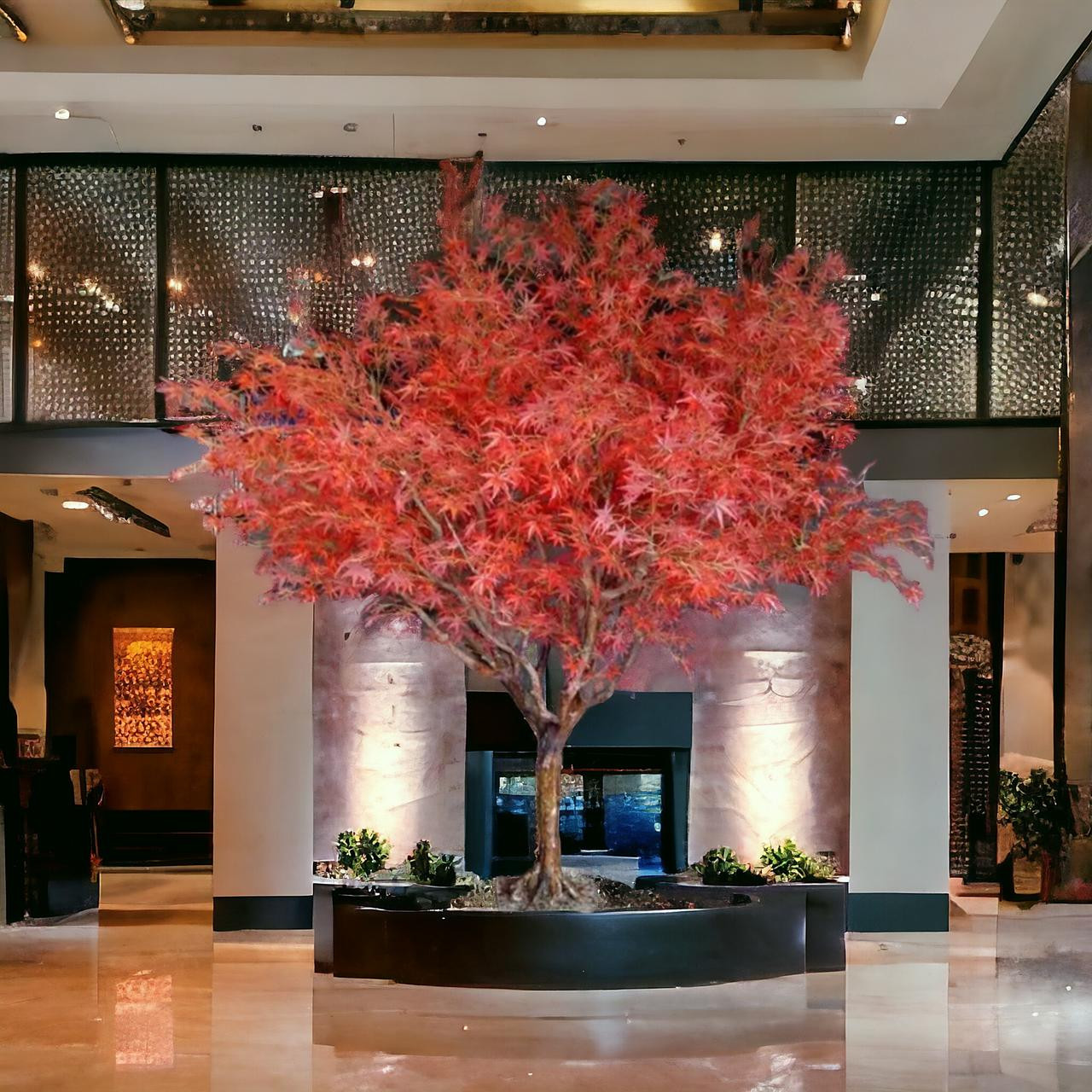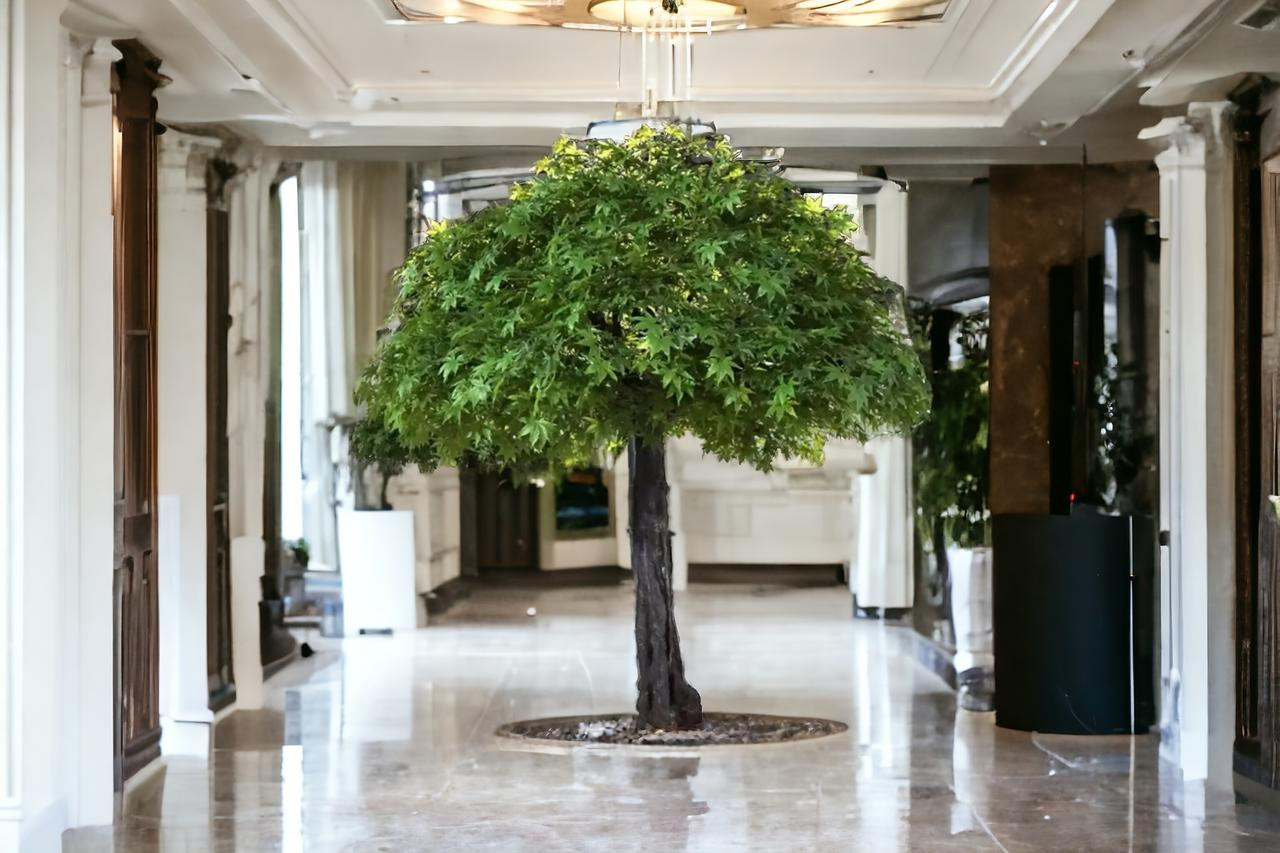Maximizing Space and Privacy: The Strategic Use of Faux Trees in Restaurant and Hotel Design
Aug 17, 2024
Maximizing Space and Privacy: The Strategic Use of Faux Trees in Restaurant and Hotel Design
In the competitive world of hospitality, where ambiance is just as crucial as service and cuisine, the strategic design of spaces plays a vital role in shaping guest experiences. Restaurants and hotels continuously seek innovative ways to enhance aesthetics, maximize space, and provide privacy while maintaining an open and inviting atmosphere. One of the most effective and versatile solutions gaining popularity is the use of faux trees. These artificial plants, with their realistic appearance and low maintenance requirements, are becoming key elements in creating intimate dining areas, cozy corners, and distinct spaces within open-plan settings.
Creating Private Dining Areas
Privacy is a luxury that many diners seek, especially in upscale or romantic settings. Faux trees offer a creative and flexible way to provide this privacy without the need for permanent walls or partitions that can make a space feel enclosed or less inviting. By strategically placing faux trees between tables or around specific dining zones, restaurants can create intimate, secluded areas that give guests a sense of exclusivity and personal space.
Faux trees, such as tall bamboo, ficus, or palm trees, can be arranged to form natural-looking barriers that subtly separate one dining area from another. This not only enhances privacy but also contributes to the overall aesthetic of the restaurant. Unlike solid partitions, faux trees allow light to filter through, maintaining a sense of openness and airiness while still providing the desired separation. The use of different types of faux trees can also introduce varying textures and colors, further enriching the visual appeal of the dining space.
Moreover, faux trees are highly customizable. They can be arranged to fit the specific dimensions and design of any restaurant, and they can be easily repositioned or rearranged as needed. This flexibility is particularly valuable in restaurants that host a variety of events and need to frequently alter their layout to accommodate different group sizes and seating arrangements.
Enhancing Cozy Corners
In addition to creating private dining areas, faux trees are also effective in enhancing the coziness of corners and smaller spaces within larger rooms. These areas can be transformed into inviting nooks that encourage guests to linger, relax, and enjoy their surroundings. For example, placing a faux tree next to a seating area can create a sense of enclosure and comfort, making the space feel more intimate and personal.
In hotel lobbies, where guests often seek quiet spots to read, work, or converse, faux trees can be used to carve out these cozy corners without disrupting the flow of the overall space. A well-placed faux tree can provide just enough of a barrier to create a sense of privacy while still allowing guests to feel connected to the larger environment. This balance is crucial in maintaining the open, welcoming atmosphere that hotels strive to create in their public areas.
The choice of faux trees in these settings is important. For a luxurious, tranquil vibe, consider using faux olive trees or flowering cherry blossoms, which bring a touch of elegance and calmness to the space. For a more tropical or vibrant feel, palm trees or bird of paradise plants can infuse the area with a sense of warmth and relaxation. The key is to select trees that complement the overall design theme and contribute to the desired ambiance of the space.
Separating Spaces in Open-Plan Designs
Open-plan designs are increasingly popular in both restaurants and hotels for their ability to create spacious, airy environments that encourage social interaction and flexibility. However, these designs can sometimes present challenges when it comes to defining different functional areas and ensuring that guests have adequate privacy. Faux trees offer an ideal solution for these challenges by providing a means to delineate spaces without compromising the open feel of the environment.
In open-plan hotel lobbies, for example, faux trees can be used to separate the reception area from the lounge or bar, or to create distinct seating areas within a larger space. This not only helps to organize the space more effectively but also enhances the overall guest experience by creating a sense of structure and purpose in the design. Guests can easily identify different zones within the lobby, whether they are checking in, meeting friends, or enjoying a drink.
Similarly, in open-plan restaurants, faux trees can be strategically placed to define different dining areas, such as a casual section, a more formal dining area, or a bar. This allows the restaurant to cater to different types of guests simultaneously, creating a versatile space that meets a variety of needs. The use of faux trees in these contexts also allows for a greater degree of creativity and customization in the design, as the trees can be arranged to suit the specific layout and ambiance of the restaurant.
Practical Considerations and Advantages
The use of faux trees in restaurant and hotel design is not just about aesthetics; it also offers a number of practical advantages. One of the most significant benefits is the low maintenance required for faux trees. Unlike real plants, which need regular watering, pruning, and care, faux trees maintain their appearance without the need for ongoing attention. This is particularly important in busy hospitality environments where staff may not have the time or expertise to care for live plants.
Faux trees are also more durable and long-lasting than real plants. They do not wilt, shed leaves, or attract pests, making them a reliable choice for high-traffic areas. Furthermore, faux trees are not affected by changes in temperature, humidity, or lighting conditions, meaning they can be placed anywhere in a hotel or restaurant without concern for their well-being. This flexibility allows designers to use faux trees in areas where real plants might struggle, such as dimly lit corners or spaces near heat sources.
Another practical advantage of faux trees is their ability to be customized to fit the specific needs of a space. Many manufacturers offer faux trees in a variety of sizes, shapes, and styles, allowing designers to select trees that perfectly match the design vision of the space. Whether a restaurant needs a towering ficus to anchor a large dining room or a series of smaller potted trees to line a hallway, faux trees can be tailored to meet the exact specifications of the project.
In addition, faux trees can be easily cleaned and maintained, ensuring that they continue to look fresh and vibrant over time. Unlike real plants, which can become dusty or develop unsightly spots, faux trees can be wiped down with a damp cloth or gently cleaned with a vacuum to keep them looking their best. This ease of maintenance is particularly valuable in the hospitality industry, where cleanliness and presentation are of paramount importance.
Conclusion
In the dynamic and ever-evolving world of restaurant and hotel design, the strategic use of faux trees offers a versatile and effective solution for maximizing space and privacy. Whether used to create private dining areas, enhance cozy corners, or separate spaces in open-plan environments, faux trees bring a unique blend of aesthetics and practicality to the design process. Their realistic appearance, low maintenance requirements, and customizable options make them an ideal choice for hospitality settings, where the guest experience is shaped by both the physical environment and the ambiance it creates.
As the demand for flexible, multi-functional spaces continues to grow, the role of faux trees in restaurant and hotel design is likely to expand. Designers and operators alike can benefit from exploring the creative possibilities that faux trees offer, using them to transform spaces into welcoming, stylish, and comfortable environments that leave a lasting impression on guests. Whether creating a secluded dining nook or defining a bustling hotel lobby, faux trees provide the perfect balance of form and function, making them an invaluable tool in the pursuit of exceptional hospitality design.




